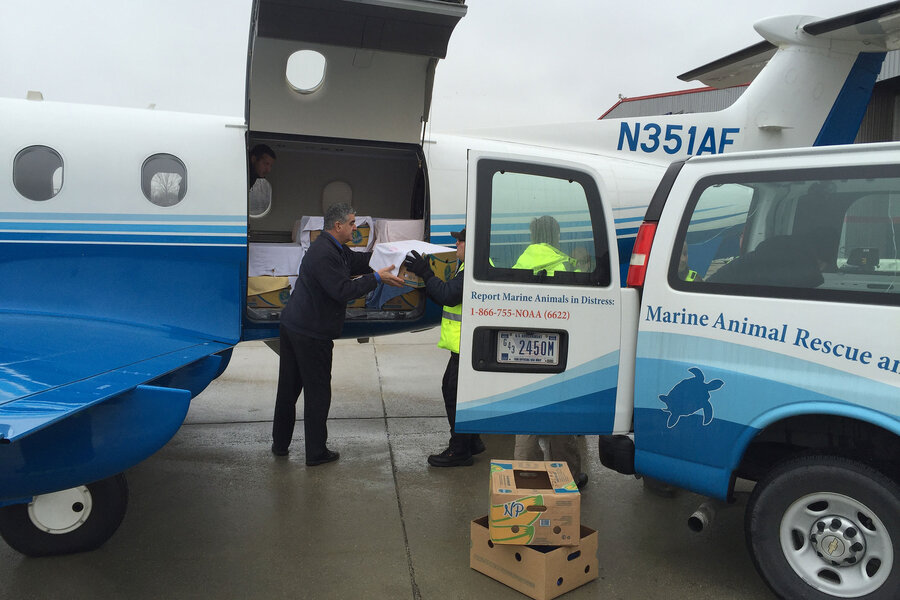Why are these sea turtles flying south for the winter?
Loading...
Rescuers working to save sea turtles stranded in cold northern waters have employed cars, trucks, and even planes to fly the turtles south for the winter.
Aquariums always process a few turtles "stunned" by winter cold, but this year's rescue season has been unusually long because of the Northeast's warm December, and a network for ground and aerial transportation has been key in moving the sea turtles to safety.
“We drove the turtles to the border with South Carolina, and their team picked them up,” North Carolina sea turtle biologist Matthew Godfrey told the St. Augustine Record. “They drove to the border with Georgia, and the Georgia team picked them up and drove them across the border into the northern part of Florida.”
As far south as North Carolina, rescuers have brought sea turtles into aquariums with symptoms of sea turtle hypothermia: slow, emaciated, and dehydrated. The New England Aquarium always receives a number of inexperienced young turtles that get stuck in Cape Cod from late October into December.
Adult turtles do not normally swim as far north as Massachusetts, but inexperienced juvenile turtles sometimes do, and if they miss the migration urge to head south, they quickly become paralyzed with cold once winter begins, Tony LaCasse, spokesman for the New England Aquarium, tells The Christian Science Monitor.
About 90 percent of the strandings are Kemp-ridley sea turtles, which are the most endangered variety of the species, Mr. LaCasse says. The Kemp-ridley population has not yet recovered the way some sea turtle populations have, and they are legally entitled to conservation funds and effort under both the Endangered Species Act and international treaties.
In a normal year, when the New England Aquarium processes around 90 stunned sea turtles, the existing rescue network can transport and rehabilitate the sea turtles effectively. When an unusually high number of turtles are in distress – 733 in 2014 and 320 in 2015 – finding places to send the turtles and the means to transport them becomes an almost full-time job for Kate Sampson, sea turtle stranding and disentanglement coordinator for the Northeast at the National Oceanic and Atmospheric Administration (NOAA), throughout November and December.
"We find places that have space for them, and then we need flights," Ms. Sampson told The Christian Science Monitor in a phone interview.
Although flying might seem like the more difficult mode of transport, it is less stressful for the sea turtles than driving because it decreases travel time from New England to Louisiana or Florida. The main health concern for turtles in maintaining constant temperature, Sampson says, so they avoid commercial flights that cannot guarantee a warm cargo hold in the winter months.
Instead, Sampson finds flights via NOAA, private planes piloted by aviator volunteers, or even the US Coast Guard, which once transported 193 turtles in one plane.
"The transportation of these turtles is this huge volunteer effort for people who are not in the turtle community," Sampson says.
The higher number of stranded turtles is partly due to weather, as the warm temperatures along the East coast this December resulted in water temperatures that were seven degrees higher than usual.
"That didn’t work in favor of the turtles because it took longer for them to wash up," Mr. LaCasse says. "Instead of just floating for three or four weeks, it’s been floating for seven or eight weeks."
It may indicate a side effect of conservation success for an endangered animal, Sampson says, because higher numbers of nesting turtles mean higher numbers of juvenile turtles can get stranded while exploring New England waters.







